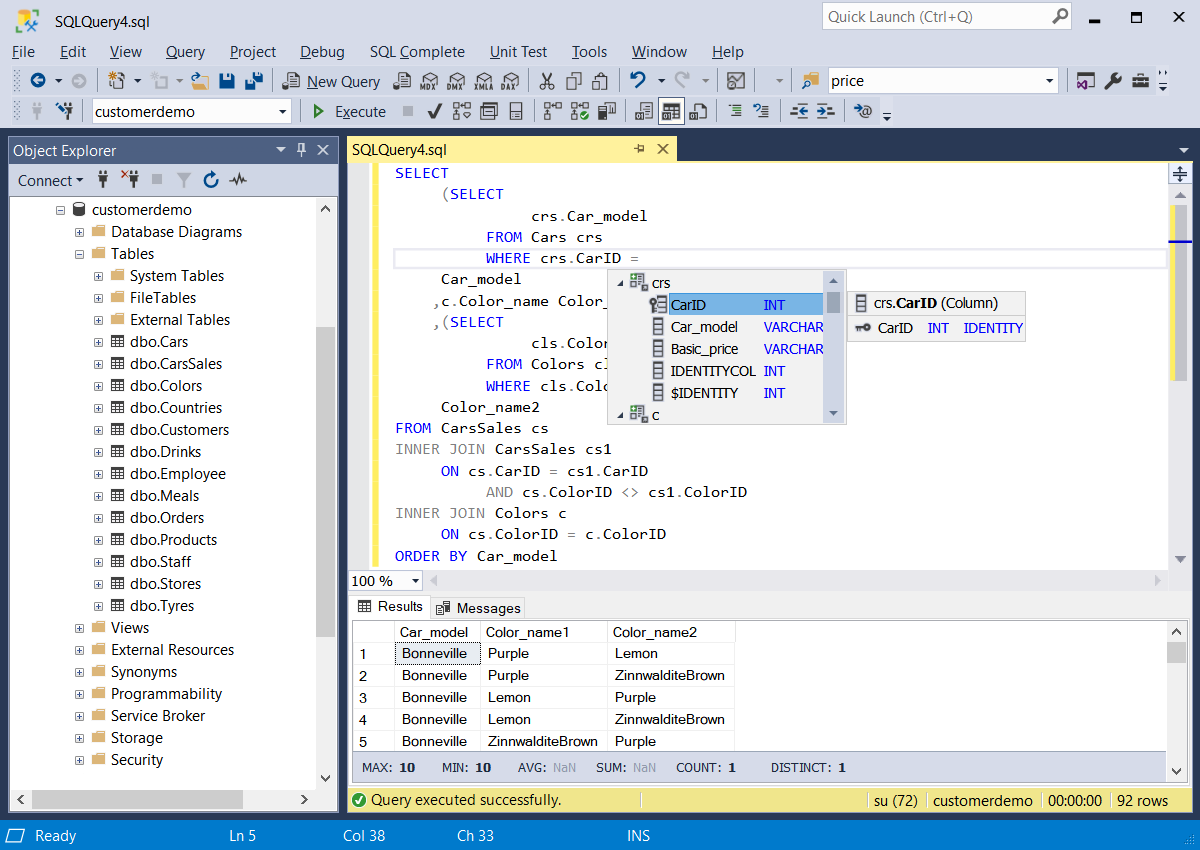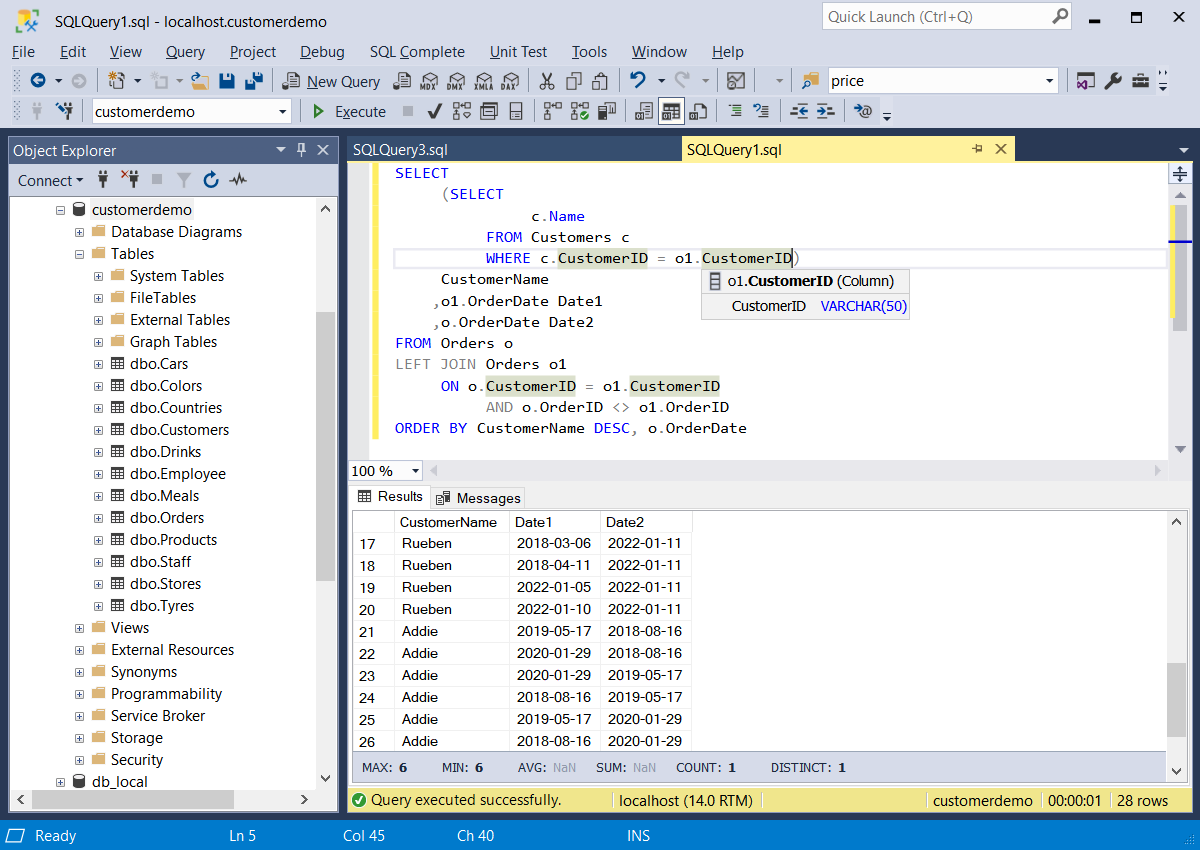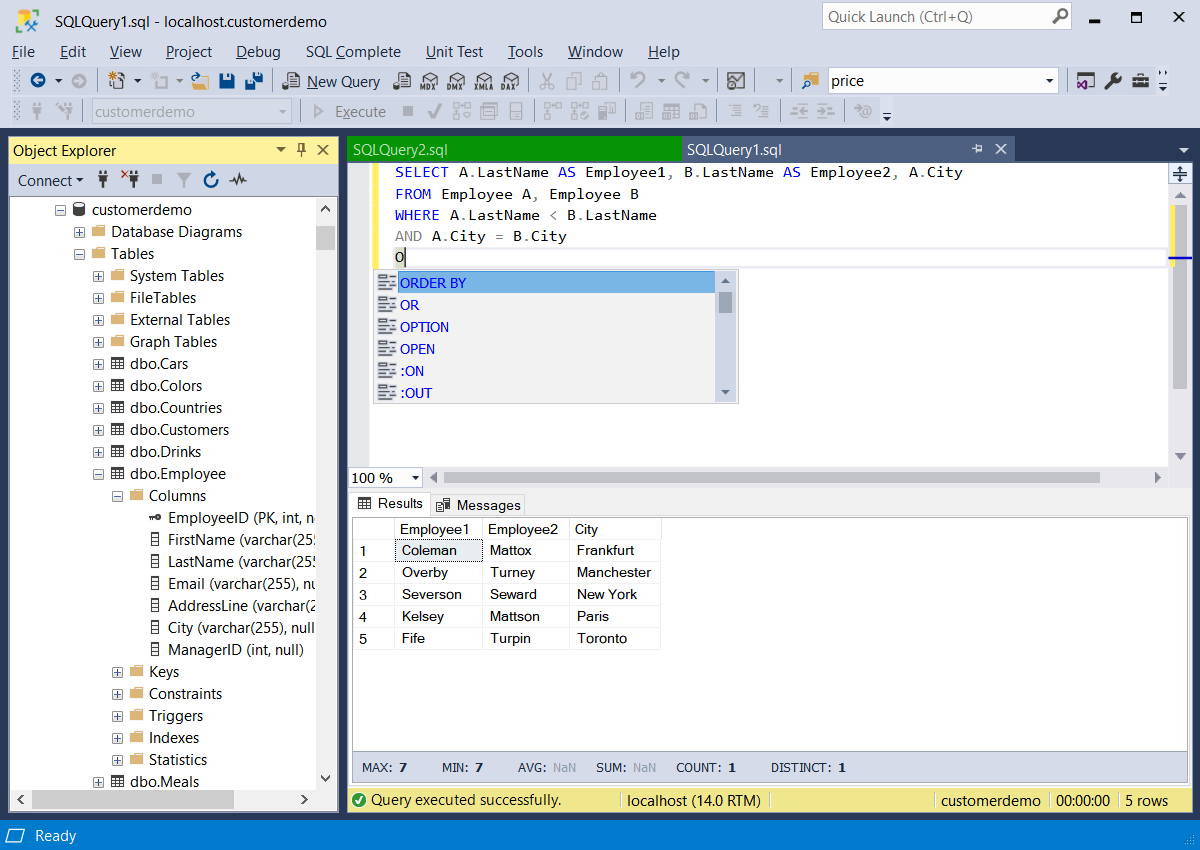Understanding SQL Server SELF JOIN By Practical Examples
A SQL SELF JOIN is a powerful technique that allows you to join a table to itself. This is useful for comparing rows within the same table, such as finding relationships between employees and their managers, or comparing records that share common attributes. While the process may seem complex, tools like dbForge SQL Complete can significantly simplify working with SELF JOINs by providing code completion, syntax checking, and formatting features. In this article, we will explore practical examples of SQL SELF JOINs and show how dbForge SQL Complete can help you streamline your SQL development and improve efficiency.
What is SELF JOIN and how does it work?
The SELF JOIN in SQL, as its name implies, is used to join a table to itself. This means that each row in a table is joined to itself and every other row in that table. However, referencing the same table more than once within a single query will result in an error. To avoid this, SQL SELF JOIN aliases are used.

SELF JOIN syntax
To perform a SELF JOIN in SQL, the LEFT or INNER JOIN is usually used.
SELECT
column_names
FROM
Table1 t1
[INNER | LEFT] JOIN Table1 t2 ON
join_predicate;
Note: t1 and t2 are different table aliases for the same table.
You can also create the SELF JOIN with the help of the WHERE clause.
SELECT
column_names
FROM
Table1 t1, Table1 t2
WHERE
condition;






